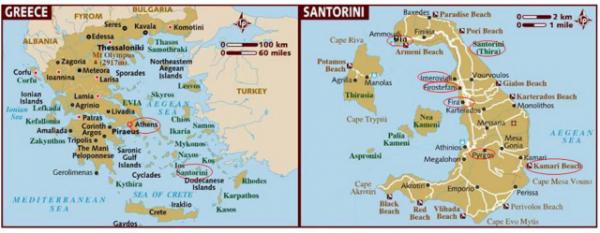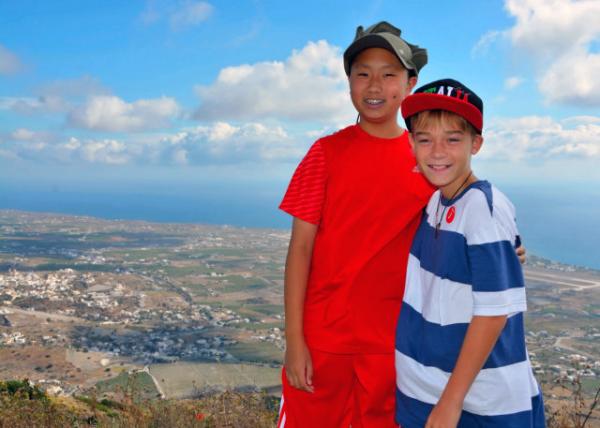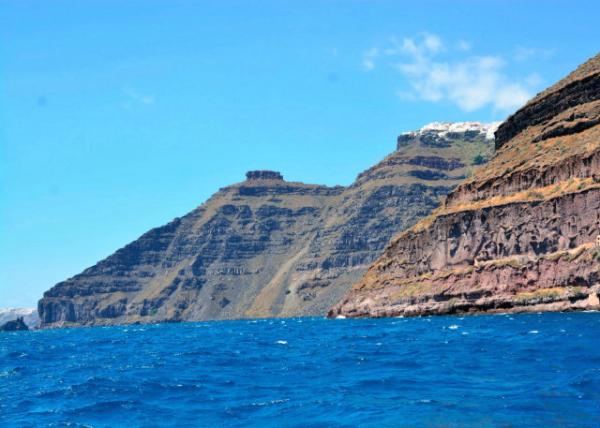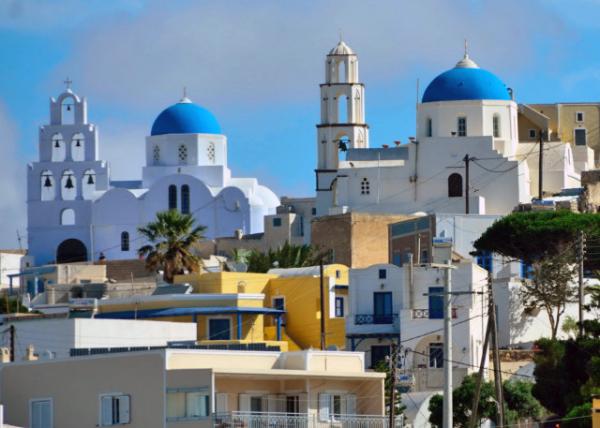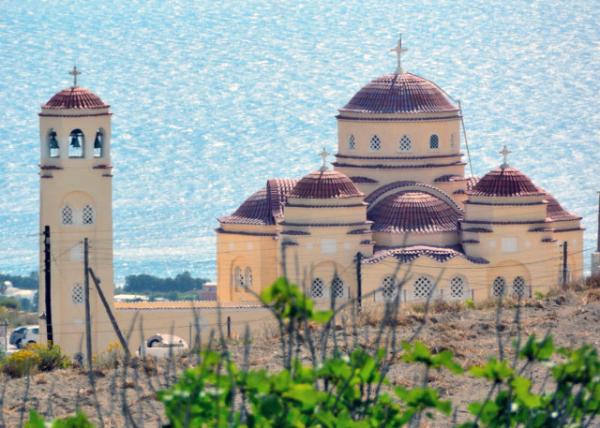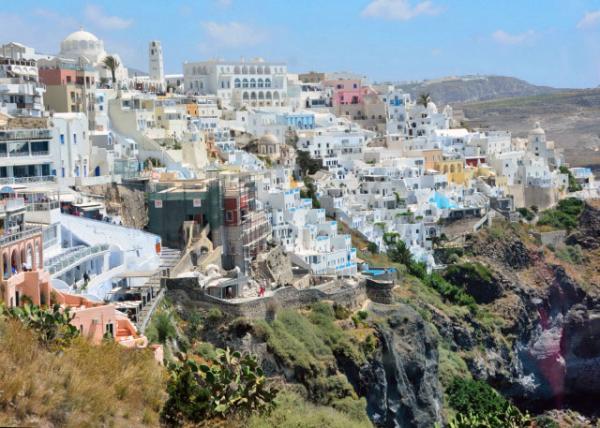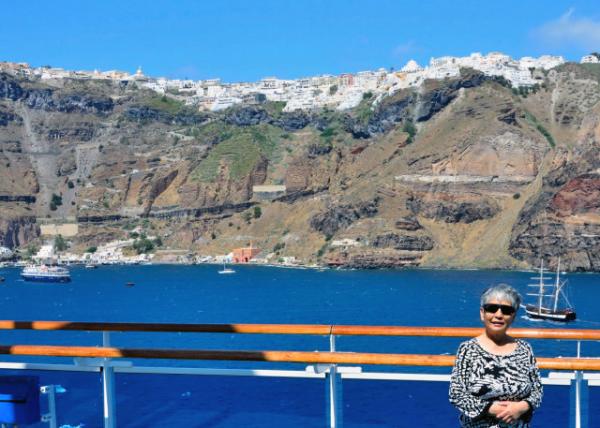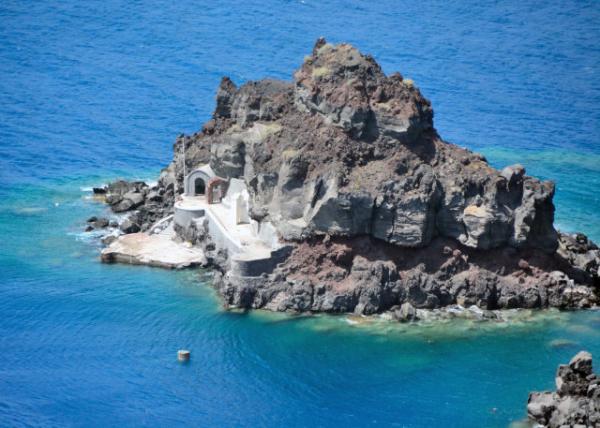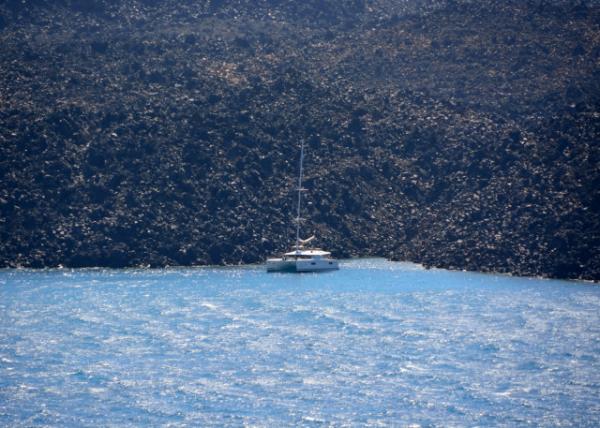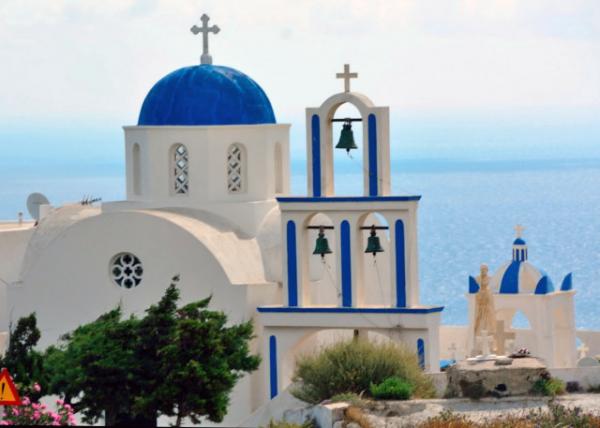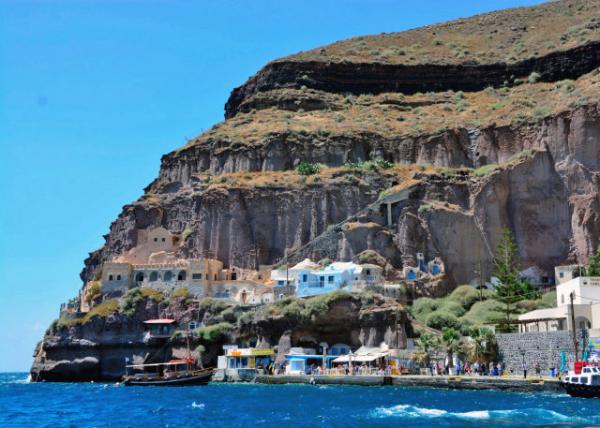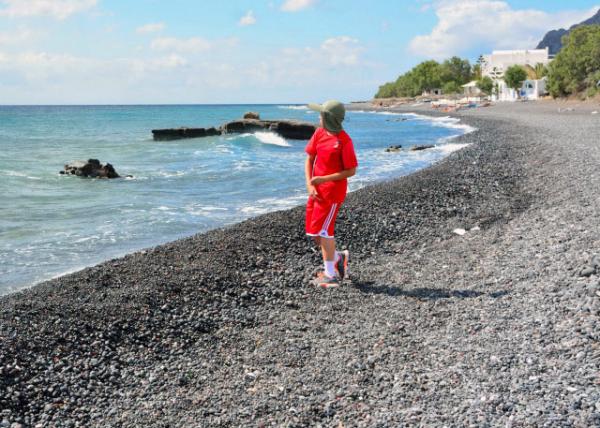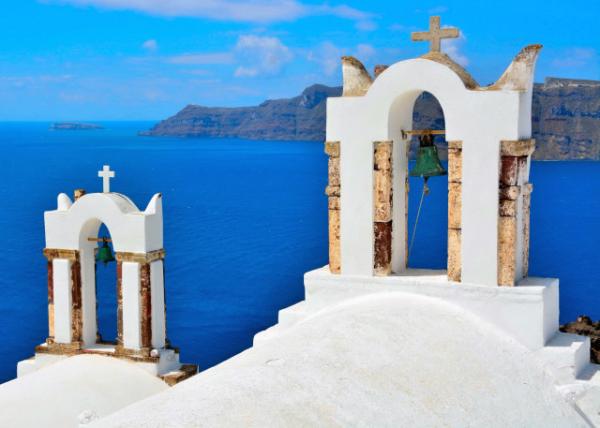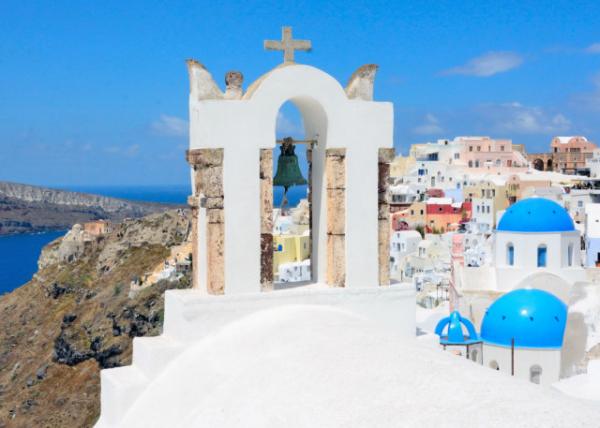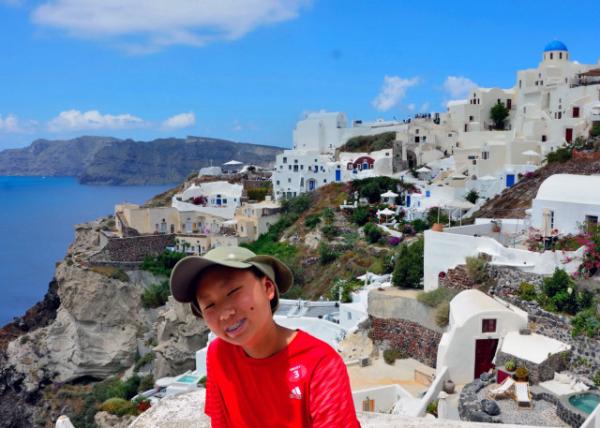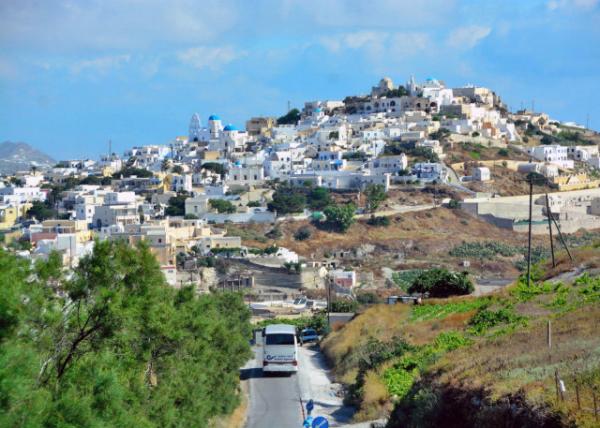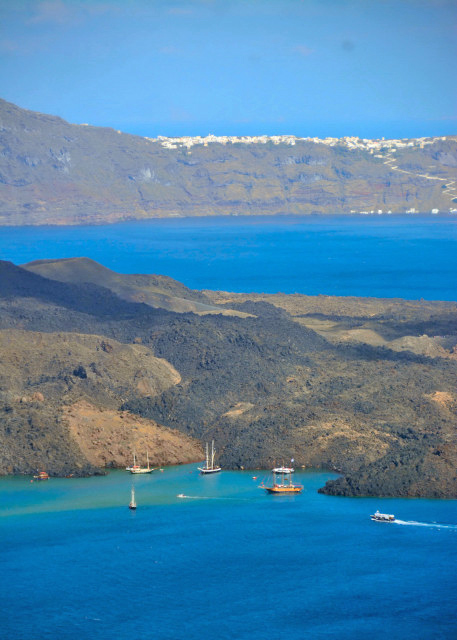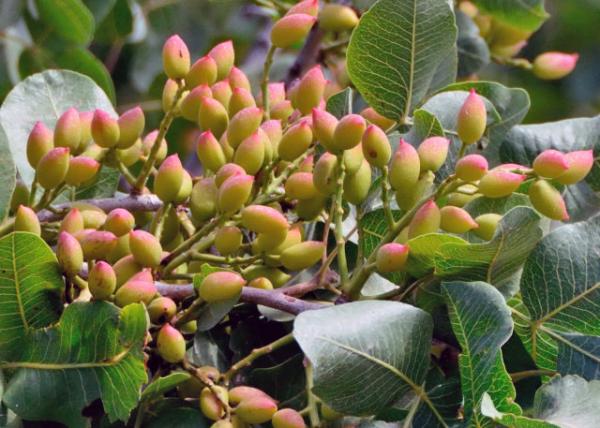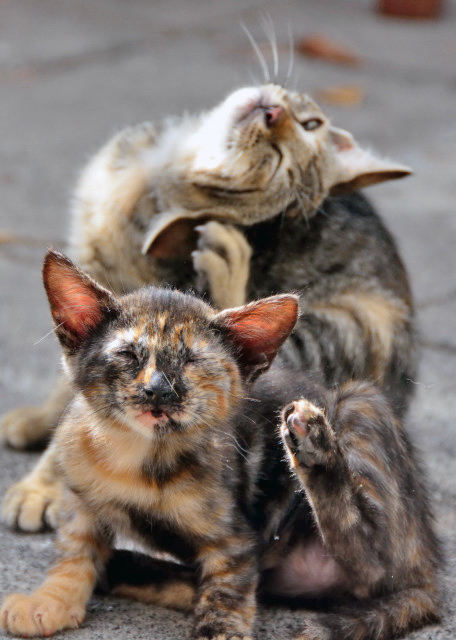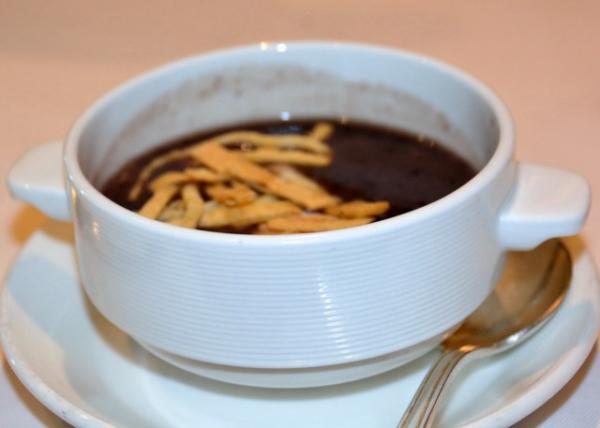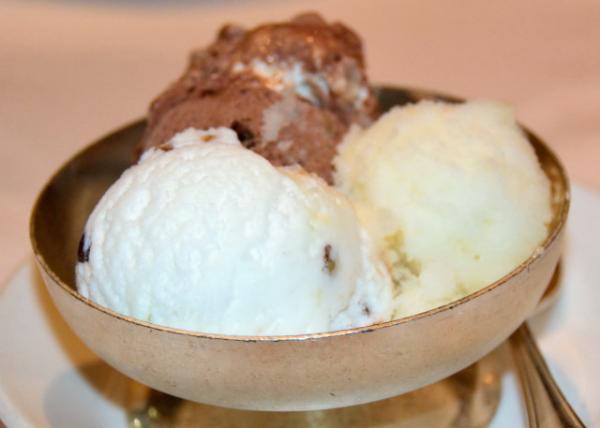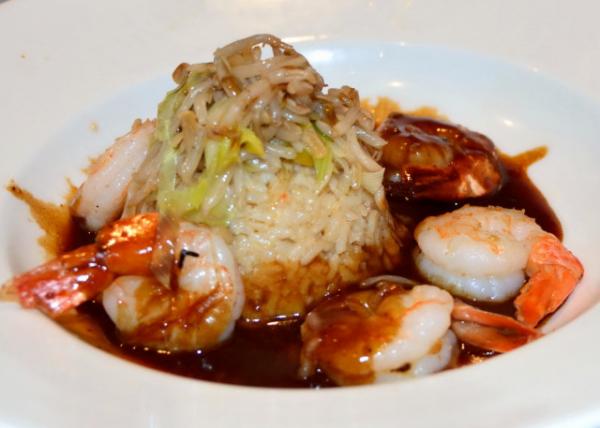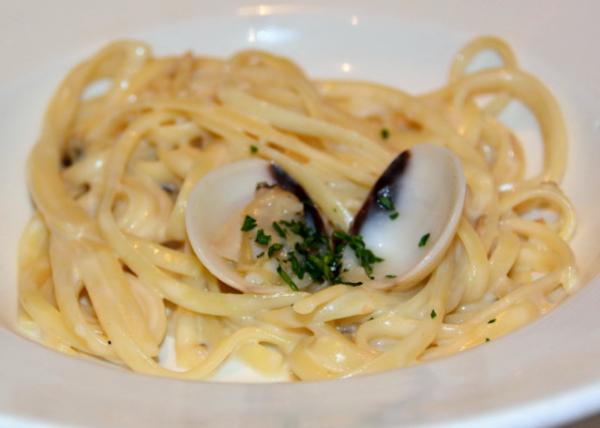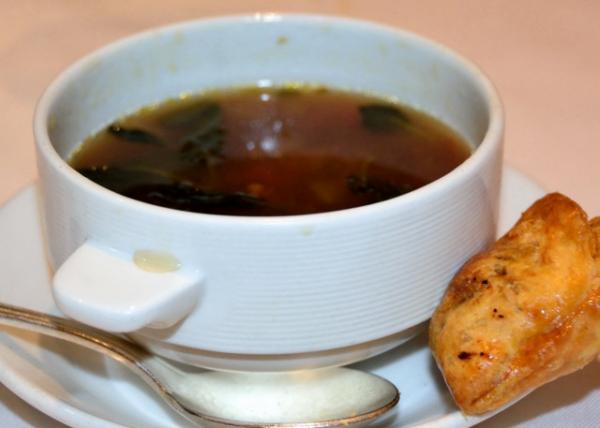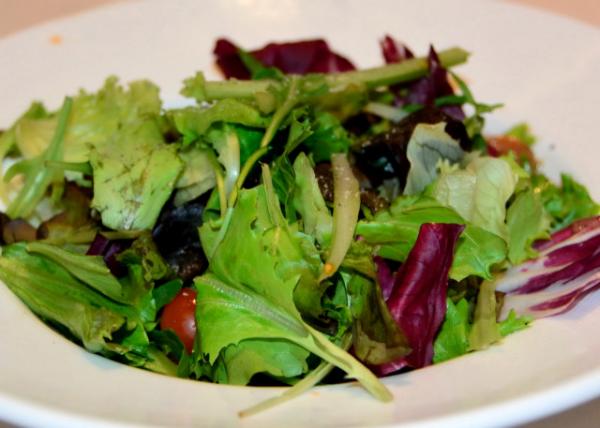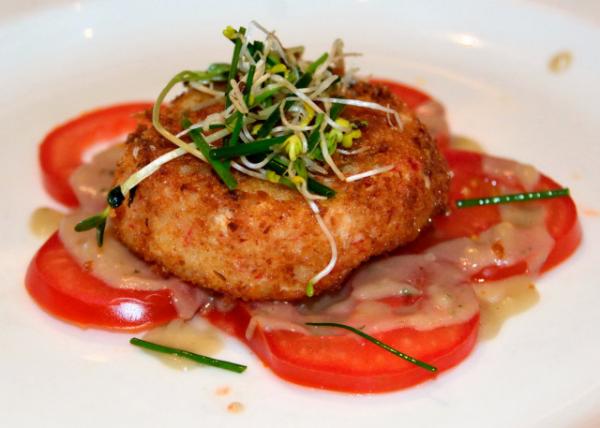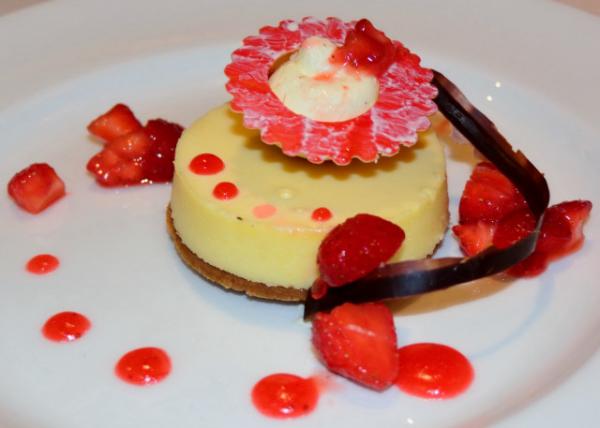| 希臘聖托里尼生命輪迴(The Circle of Life in Santorini, GR) |
| 送交者: 天邊的紅霞 2020年04月27日09:11:29 於 [五 味 齋] 發送悄悄話 |
|
2015-06-19
【Aiden in English】 It’s really funny how some things after being destroyed can start again. At times, it becomes impossible to even exist anymore. What goes around comes around, and the return can be amazing. In 1650 B.C., a massive earthquake struck Santorini of in Greece. The island would never be the same. This most beguiling island of the Cyclades was sitting on two clashing continental pates. One earthquake triggered tsunamis, and an eruption shook the island from an active volcano. One half of the island rose, while a large chunk became a very odd-looking sea bed. It created a signature caldera and two smoldering islands situated in the center. Of course, the crater just so happened to remain on the surface, for the land around it just magically and miraculously missed the volcano. The dark beach spans out a direct result of the volcanic activity along the coastline, striking contrast to the azure sea with its onyx-colored sand. After the whole affair, the volcano stayed active all the way until the present day. That’s what I call stubborn, which sounds similar to some people trying to win the lottery. The eruption also gave birth to a sheet of very fertile volcanic ash. The ash made exotic plants grow. When settlers came, they farmed an extremely lush island of vegetation. Unlike any part of the Mediterranean Sea, it provided amazing scenic views where the volcanic walls were capped by whitewashed villages. The island was sheered with a sharp cliff dropped steeply into the tranquil caldera bay. The people of Santorini also followed a very Chinese way of cultivating land, which involved a stairway or terrace of planting style. The farm land made up most of the area back to flower-filled verandas. Santorini had no fresh water through, and that factor crippled the civilization. In 1956, a huge earthquake moved the river flowing through the island. The river had meant life. Now the people stuck on Santorini are also stuck on having the tourists pay to go to the restroom. Some islanders were even afraid to invite friends into their houses. I guess the locals go looking for cover lots of time. Water is probably the largest imported goods, and a drop of water might as well be a drop of wine. These sides evened out to a pretty nice island. The island got a second chance. As we all know, if you beat an orange to pulp without removing the seeds, it will never grow back or produce another orange. Yet apparently, there is a law in physics that if a volcano blows up an island multiple times, it becomes prettier and more fertile. It defies a crucial law in the universe. The law is based on a thing called “entropy”, which means that everything is destroyed. At the finish line or at different points along the way, all of existence will disappear, for example, Pompeii in Italy. When Mt. Vesuvius erupted, Pompeii was destroyed and never rebuilt. At present, it looks like just a replica, and Santorini would never become a busy metropolis. Our sun only has another 5 billion (give or take a few million) years to burn. Light can be sucked into black hole. Everything that starts has to stop. Thus, I guess there’s room for a few acceptances like Santorini, but only far. The universe will disappear and be replaced by something even more bizarre and inexplicable, and apparently, so does this entry. Santorini lasted through earthquakes, eruption, and time. Soon though, I’m sure there will be something that the island has to fight for its survival. 【紅霞譯文】 生命輪迴着實饒有興趣,有些東西從此化為烏有,有些事情一去不再復返,但善有善報,惡有惡報,一旦逃過劫難,未來會更加美好。 公元前1650年,希臘聖托里尼島發生了強烈地震,從此舊貌換新顏,這個堪稱基克拉迪群島最漂亮的海島地處歐非兩塊衝突的地理板塊之間,地震引起海嘯,火山爆發帶動地殼變遷,一半火山升出水面,剩餘的大片怪石嶙峋並構成地貌迥異的海底世界。聖托里尼島皓若一個盛滿海水的巨型招牌火山口,兩個後來形成的火山島位居其中,與周圍峻山奇嶺遙遙相望;同時,海岸線一帶火山活動成就了漂亮的黑色沙灘,瑪瑙般的沙礫與碧藍的天空形成鮮明對比。 聖托里尼島幾經大自然洗禮,直到現在其火山活動仍然十分活躍,火山簡直太過固執,好像跟賭棍沒啥兩樣。火山噴發釋放出大量火山灰,把土壤滋潤得相當肥沃,有助於奇花異草茁壯生長,難怪當年父老鄉親一踏上這片土地,無不為之欣然傾倒。與地中海其它島嶼卓有不同,聖托里尼島風景秀美,萬丈火山壁陡峭險峻,徑直跌入湛清澄澈的火山海灣,星羅棋布的白色村莊像個龐大的頭套緊緊罩在懸崖之巔。聖托里尼人活學活用,乾脆把一畝三分地開墾成中式梯田,屋前陽台花枝招展,房後農莊滿園春色。聖托里尼島淡水短缺,嚴重阻礙了文明建設。1956年地震徹底摧毀了原有河流,而河水乃是生命之源。如今定居在島上的居民不得不要求遊客付費上廁所,有的甚至不敢貿然邀請朋友來家做客,我覺得當地人礙於沖洗馬桶所致,水無疑成為最大的進口商品,水貴如酒。這麼看來,聖托里尼島真是優缺點參半。 聖托里尼島生命輪迴。正如大家所知,如果你做橙汁的時候無核可剔,那麼這種橙子永遠無法用來播種傳代。按照物理定律,火山爆發的次數越多,土壤色澤越好養分越足,進而揭示出一個殘酷事實,定律基於所謂的“熵”值而論,也就是說世間所有事物最終都會趨於滅亡,只不過時間有早有晚,舊的不去新的不來,意大利的龐貝就是佐證。維蘇威火山爆發之時,正是龐貝滅亡之日,而且絕無可能再獲新生。眼下聖托里尼重蹈覆轍,恐怕永遠不會發展成為繁華都會。太陽頂多再繼續燃燒50億年(前後加減幾百萬年),光也能被黑洞遮住,有開始必有結束。因此在我看來,個例時有發生,老天爺非常厚待聖托里尼,但別期待過高。 宇宙終將消失,取而代之的是一些無法想像和令人費解的東西,這就是熵值的現實意義。聖托里尼島命大,曾逃過地震、火山以及時間之磨難;相信不遠的將來,它還會面對生與死的抉擇。
|
|
|
|
|
 |
 |
| 實用資訊 | |
|
|
|
|
| 一周點擊熱帖 | 更多>> |
|
|
|
| 一周回復熱帖 |
|
|
|
|
| 歷史上的今天:回復熱帖 |
| 2019: | 第三隻眼睛看一帶一路 | |
| 2019: | 首頁劉強東一地雞毛的文章,證明我當時 | |
| 2018: | 醒獅| 契約精神vs小聰明 | |
| 2018: | 毛粉團北韓出車禍,家屬咋一聲沒吭尼? | |
| 2017: | 秋念11:西化,將是中華民族最深重的災 | |
| 2017: | 專家們評估川普新稅收計劃(譯文) | |
| 2016: | 隨着床鋪不斷接近黨內提名,媒體也似乎 | |
| 2016: | BBC: 吳弘達遇意外去世終年79歲 | |
| 2015: | 看了阿巫下面貼的那條假新聞,想起微信 | |
| 2015: | 哈哈。這些上海丐幫車模倒是挺可愛的。 | |




